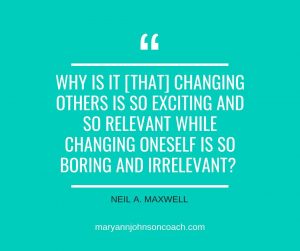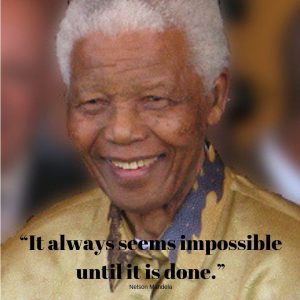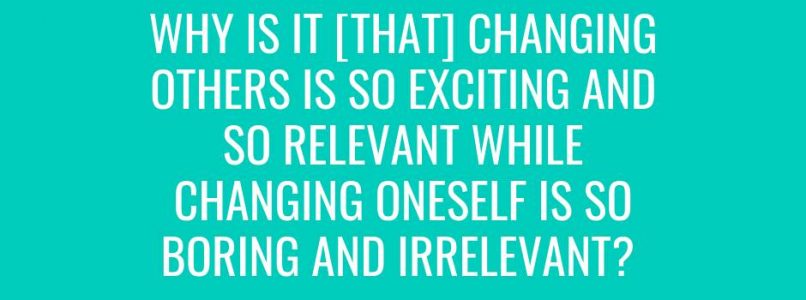 Change can be hard. One reason that change is so challenging is that we misunderstand what change actually looks like and we also misunderstand the time that is required for change.
Change can be hard. One reason that change is so challenging is that we misunderstand what change actually looks like and we also misunderstand the time that is required for change.
I have read many books on change. There is the standard – it takes 30 days to create a new habit. If we are talking about making our bed daily or exercising every morning then that is probably true. But if we are talking about changes that involve our character or our ability to respond differently in times of stress then maybe, just maybe, it will take more.
When I wanted to stop yelling that required a huge mind shift. I had to come to believe that I could actually stop yelling, that it was in my power to make that change. Accepting that fact took a few years.
Then I had to figure out what to do besides yell because it’s easier to replace a behavior than to stop a behavior. Once I knew what I was going to do instead of yelling I had to practice, practice, practice.
And here is where it’s important to understand what change looks like. Change looks like failure long before it looks like success.
Steps to Change
Step One – Realize that you need to make a change.
Step Two – Begin to believe that it is within your power to make a change.
Step Three – Determine what needs to change. Let me give you an example. I needed to get a handle on my complaining. It wasn’t that I wasn’t happy but the words of complaint just kept falling out of my mouth. It’s just too hot! I don’t know why you can’t put your socks in the hamper. I wish the prices weren’t so high. Why won’t my hair just do what I want it to? This meat is overcooked.
When I had this conversation with a friend, she said, “Well, everyone does that!” She is right but that doesn’t make it a healthful or useful practice. I knew that if I controlled what came out of my mouth I would experience far more moments of happiness during the day.
I determined that I needed to express gratitude more often and I did this by using a small notebook where I wrote down what I was grateful for as I went through the day. I also had a second small notebook where I recorded my complaints. Then I would tear up those pages each night. These exercises may seem simple and even silly but they kept my mind on what I wanted to do instead of what I had been doing.
Step Four – Make a firm commitment to doing the work and giving it all the time required. I can always tell when I only wish I was different or hope to be different and when I am committed. That is key. You have to have a firm intention that no matter what it takes, how long it takes or how discouraging it feels you will keep going.
The Process of Change
A – Realize that you will continue to do the very thing you want to change. This is the step where change looks and feels like failure. When I was working to replace yelling with self-control I would often yell. Right after I yelled I would think in my mind, “Rats. I yelled. I don’t want to yell anymore!” I would feel bad and I would feel like a big failure at this self-control thing.
However, I eventually came to understand that every time I recognized that I had errored, gave up blame and took responsibility for my actions and then determined to do better, I was making progress.
B – Stop. Eventually, I would stop in mid-yell. I would mentally catch myself and reverse course. This entailed a fair amount of apologizing. It was uncomfortable but it was progress. I caught myself and made an adjustment.
C – Change. Finally, I would think about yelling and I wouldn’t. I would choose to respond differently. It felt wonderful when I began to experience this step more often. That didn’t mean that I didn’t fall back to step three and four; I did, for a long time. But eventually, I found myself staying in control more often.
It Takes Time to Change Our Way of Being
Here is another place where people in the process of change find themselves in trouble. We think that if it takes 30 days to develop a new habit then that should equate to change but it doesn’t. The kinds of change that I’m talking about, those that make us better people and parents, are changes not just in what we do but in our very being, our character and that requires time.
It took me ten years from the time I realized that yelling was not a good coping skill or parenting tool to consistently staying in control. And the truth is, I can, on occasion, still find myself yelling. It is a lifetime work for me. However, if I had bought into the idea that I needed to accomplish this significant change in 30 days or one year or even five years, well, I might have given up and never made it to where I am today.
My current project, giving up complaining, has been in process for over six years. Sometimes I feel discouraged. But I express gratitude more often than in the past, even though I still complain. I am making progress.
Changing our way of being, who we are, how we respond, doesn’t have to take ten years or even six. But if it does, hang on and keep working.
As Nelson Mandela said, 








AMEN to this whole article!!!!!!! Lately I’ve often felt frustrated that my way of being is a main contributor to many of the things in my life/family/home that I wish were going better. It’s felt so overwhelming to think about how to possibly change that. I love how Mary Ann has outlined the steps here, and shown that it IS possible, even if it IS hard and a LONG process!
Joy, as you experiment let me know how it goes. You can do this and knowing how it looks in real life matters. : )